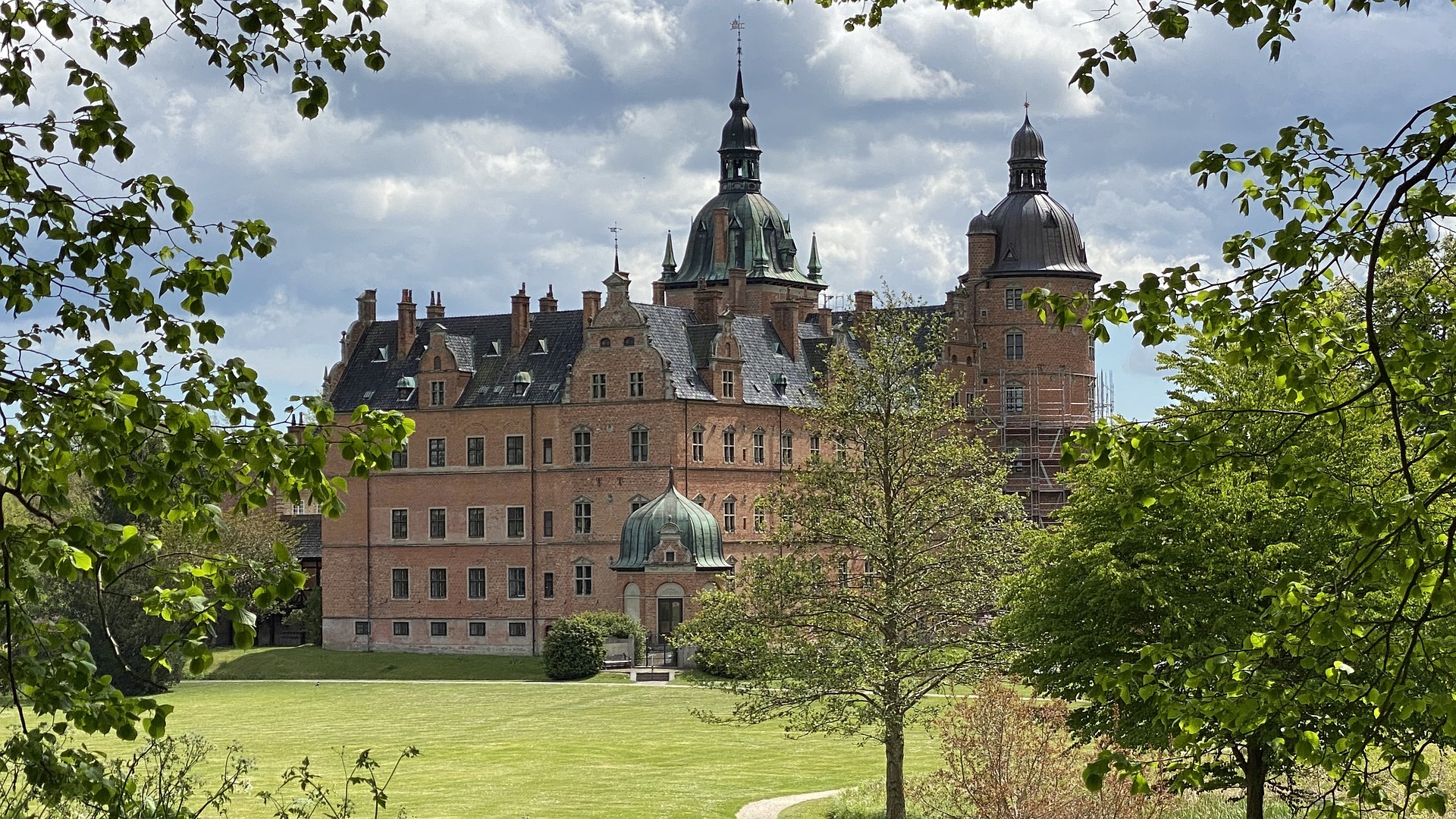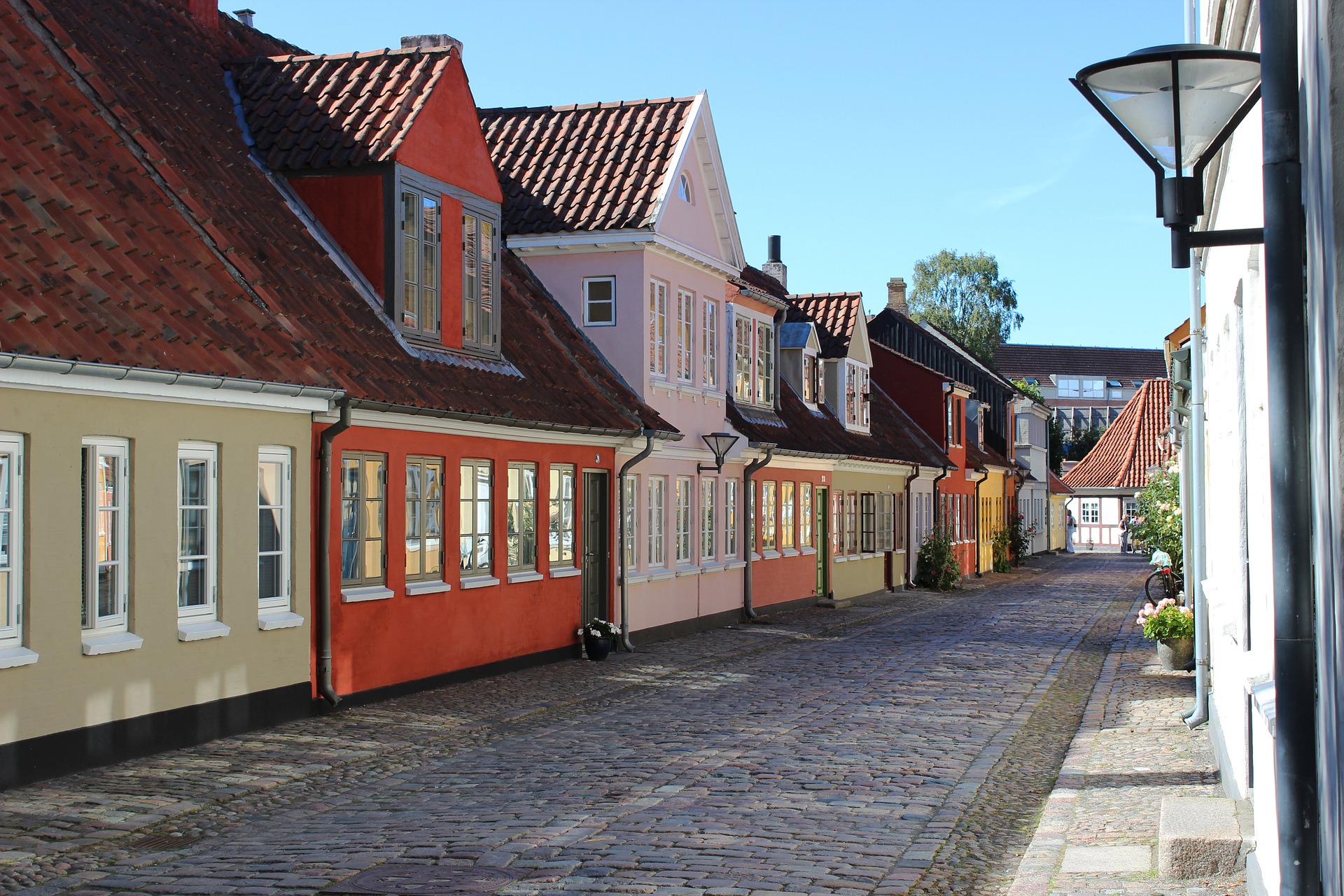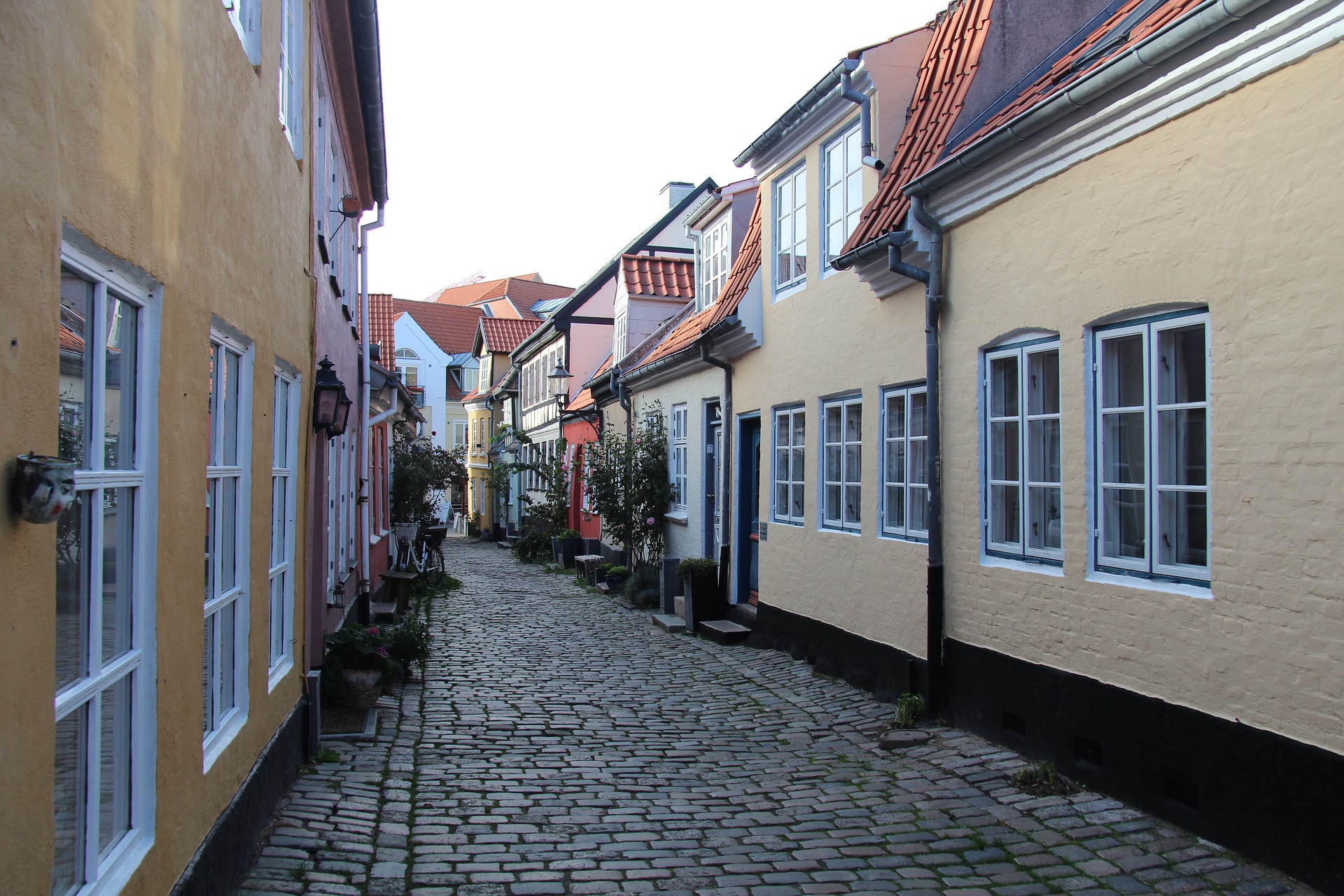Denmark is a small Scandinavian country known for its vibrant cities, picturesque landscapes, and rich history. The country offers a unique blend of modernity and tradition, making it a popular destination for tourists from around the world.
Copenhagen, the capital of Denmark, is one of the most popular destinations in the country. The city is known for its beautiful architecture, world-class museums, and lively atmosphere. Visitors can explore the historic Nyhavn Harbor, take a stroll through the iconic Tivoli Gardens, or visit the famous Little Mermaid statue.
But Denmark has much more to offer than just its capital. The country is home to a number of picturesque towns and villages, including Aarhus, Odense, and Roskilde. These charming places offer a glimpse into Danish history and culture, with their narrow streets, colorful buildings, and stunning landmarks.
One of the top attractions in Denmark is the beautiful countryside. The country is home to a number of stunning landscapes, including rolling hills, rugged coastlines, and picturesque forests. Visitors can explore the stunning natural beauty of Denmark by hiking, biking, or simply taking a leisurely stroll through one of the many parks and nature reserves.
Denmark is also known for its rich cultural heritage. The country has a long and fascinating history, which is reflected in its many museums, castles, and historic sites. Visitors can explore the Viking history of Denmark at the Viking Ship Museum in Roskilde, or visit the stunning Kronborg Castle, which is famous for being the setting of Shakespeare’s Hamlet.
One of the highlights of any trip to Denmark is the country’s famous food and drink. Danish cuisine is known for its simplicity and freshness, with a focus on high-quality ingredients and traditional recipes. Visitors can sample delicious pastries, fresh seafood, and a range of traditional dishes, such as smørrebrød (open-faced sandwiches) and frikadeller (meatballs).
Denmark is also a great destination for outdoor enthusiasts. The country is known for its excellent cycling infrastructure, with many dedicated bike paths and routes. Visitors can also explore Denmark’s stunning coastline by kayaking or sailing, or take a dip in one of the many pristine lakes and beaches.
Overall, Denmark is a fantastic holiday destination that offers something for everyone. Whether you’re interested in history, culture, or outdoor adventure, there’s something to discover in this beautiful and welcoming country.

| Capital City | Copenhagen |
| Currency | Danish Krone: Kr (DKK) |
| Language(s) | Danish (Primary) English |
| Time Zone | Central European Standard Time: GMT+1 Central European Summer Time: GMT+2 |
THINGS TO DO IN DENMARK
Copenhagen, the capital of Denmark, is a must-visit destination, with its iconic Nyhavn harbor, the world-famous Tivoli Gardens amusement park, and the colorful houses of Christianshavn. Another popular destination is Aarhus, a charming city that is home to Denmark’s oldest open-air museum, the Den Gamle By, as well as the ARoS art museum and the Marselisborg Palace.
For nature lovers, Denmark has a lot to offer, from the stunning white cliffs of Møn Island to the breathtaking Jutlandic coastline, dotted with charming fishing villages and scenic beaches. Skagen, a picturesque town in northern Jutland, is known for its unique light, which has attracted artists for centuries.
Denmark also has a rich history, and visitors can explore the country’s Viking past by visiting the Viking Ship Museum in Roskilde or the impressive Viking ring fortress of Aggersborg. For those interested in royal history, the impressive Frederiksborg Castle and Kronborg Castle, famously known as the setting of Shakespeare’s Hamlet, are must-visit destinations.
Foodies will delight in Denmark’s gastronomy scene, with its world-renowned New Nordic Cuisine, featuring fresh, locally-sourced ingredients and innovative cooking techniques. Visitors can sample local specialties such as smørrebrød (open-faced sandwiches) and Danish pastries, or experience high-end culinary creations at Michelin-starred restaurants like Noma in Copenhagen.
Finally, Denmark is known for its hygge culture, which celebrates the cozy, warm feeling of togetherness and contentment. Visitors can experience this culture by enjoying a hot drink at a cozy cafe, taking a leisurely stroll through one of the many parks, or simply spending time with friends and loved ones.
PLACES TO VISIT IN DENMARK
Denmark is a small but charming country with many towns and cities that are worth a visit. Here are ten popular destinations:
- Copenhagen – The capital city of Denmark, Copenhagen is known for its colorful buildings, beautiful canals, and historic sites such as the famous Tivoli Gardens and the Little Mermaid statue.
- Aarhus – The second-largest city in Denmark, Aarhus is a vibrant cultural hub with many museums, galleries, and theaters, as well as a beautiful waterfront and an old town.
- Odense – The birthplace of Hans Christian Andersen, Odense is a charming town with many museums and attractions related to the famous fairy tale writer, as well as a beautiful old town and several parks.
- Roskilde – A historic town located near Copenhagen, Roskilde is known for its impressive cathedral, which is a UNESCO World Heritage Site, as well as its Viking Ship Museum and the Roskilde Festival, a popular music festival.
- Skagen – A picturesque coastal town located at the northern tip of Denmark, Skagen is known for its beautiful beaches, colorful houses, and art museums.
- Helsingør – Located on the coast of northeastern Zealand, Helsingør is known for its impressive Kronborg Castle, which was the setting of Shakespeare’s play “Hamlet,” as well as its old town and maritime museum.
- Ribe – Denmark’s oldest town, Ribe is located in southwestern Jutland and is known for its charming cobblestone streets, historic buildings, and Viking museum.
- Billund – Home to the popular Legoland amusement park, Billund is a small town located in central Jutland that is a must-visit destination for families with children.
- Frederikshavn – A coastal town located in northern Jutland, Frederikshavn is known for its beautiful beaches, charming marina, and historic lighthouse.
- Kolding – A historic town located in southeastern Jutland, Kolding is known for its beautiful castle, which now houses several museums, as well as its art museum and scenic pedestrian streets.
INTERESTING FACTS ABOUT DENMARK
- Denmark is a country located in Northern Europe and is known for its high quality of life and happiness levels. It is also known for its beautiful architecture, cycling culture, and historic landmarks.
- The Danish monarchy is the oldest continuing monarchy in the world, dating back to 935 AD. Queen Margrethe II is the current reigning monarch.
- The Danish language is considered one of the most difficult languages to learn for non-native speakers due to its complex pronunciation and grammar. However, many Danes speak English fluently and it is commonly used in business and education.
- Denmark is a leader in renewable energy and has set a goal to be carbon-neutral by 2050. Wind energy is the most widely used renewable energy source in the country.
- Danish cuisine is known for its traditional dishes such as smørrebrød (open-faced sandwiches), meatballs (frikadeller), and the popular pastry, the Danish (or Viennese) pastry. The country is also famous for its beer and is home to Carlsberg, one of the largest breweries in the world.
REGIONS OF DENMARK
Denmark is divided into five regions, which are further divided into 98 municipalities or districts. The five regions of Denmark are:

Capital Region of Denmark (Hovedstaden)
Hovedstaden, also known as the Capital Region, is a charming holiday destination that includes Copenhagen, the capital city of Denmark. Visitors can experience the vibrant and cosmopolitan atmosphere of the city, explore the historical sites, enjoy the world-renowned cuisine, and shop in trendy boutiques. Beyond the city, the region also boasts picturesque seaside towns, stunning beaches, and lush forests, providing ample opportunities for outdoor recreation and relaxation.
Visit Hovedstaden

Zealand Region (Sjælland)
Region Sjælland is a scenic part in Denmark known for its charming coastal towns, beautiful beaches, and lush countryside. Visitors can explore the stunning natural landscapes and immerse themselves in the region’s rich history and culture by visiting its many castles, museums, and ancient Viking sites. With plenty of outdoor activities and delicious local cuisine, Region Sjælland is a perfect holiday destination for those looking for a relaxing and authentic Danish experience.

Southern Denmark Region (Syddanmark)
Syddanmark Region, located in southern Denmark, offers visitors a diverse range of experiences, from charming coastal towns to scenic countryside and historical landmarks. Explore the picturesque streets of towns like Odense and Kolding, or head to the stunning coastline of Rømø and Fanø. Discover the region’s Viking history at the UNESCO World Heritage Site of Jelling, or indulge in local cuisine at one of the many restaurants and cafes. Syddanmark Region offers something for everyone, making it a great holiday destination.

Central Jutland Region (Midtjylland)
Midtjylland Region, located in central Jutland, is a great destination for outdoor enthusiasts. The region offers vast forests, stunning lakes, and hills, making it perfect for hiking, cycling, and other outdoor activities. Visitors can explore charming medieval towns like Silkeborg, which is also home to the Jysk Automobilmuseum, or visit Denmark’s second-largest city, Aarhus, for its rich cultural offerings, including the ARoS Aarhus Art Museum and The Old Town Museum.

North Jutland Region (Nordjylland)
North Jutland Region in Denmark is a beautiful holiday destination known for its stunning coastline, unspoiled nature, and picturesque fishing villages. Visitors can explore the vast dune heaths, rugged coastlines, and tranquil forests, while also enjoying the vibrant cities of Aalborg and Skagen. The region is also home to several museums, galleries, and historic sites, making it a perfect destination for those seeking a mix of nature and culture.
FOOD AND DRINK IN DENMARK
Denmark has a rich culinary heritage, with a variety of traditional dishes that are often based on seafood, meat, and dairy products. One of the most famous Danish dishes is Smørrebrød, which is an open-faced sandwich made with rye bread, butter, and various toppings such as herring, salmon, and roast beef. Other popular dishes include frikadeller (meatballs), flæskesteg (roast pork), and stegt flæsk med persillesovs (fried pork belly with parsley sauce).
Danes are also known for their love of pastries, with a wide variety of sweet treats available, including kringles, cinnamon rolls, and æbleskiver (small, round pancakes filled with apple slices and dusted with powdered sugar). Another popular sweet treat is Danish butter cookies, which are often served with coffee or tea.
In terms of beverages, Denmark is known for its beer, with several well-known brands such as Carlsberg and Tuborg. The country is also home to several microbreweries that produce craft beers. Additionally, Danes are big fans of coffee, and there are many coffee shops throughout the country serving up delicious cups of joe.
Overall, Danish cuisine is hearty and flavorful, with a focus on high-quality ingredients and traditional preparation methods.
WHEN IS THE BEST TIME TO VISIT DENMARK?
Denmark has a temperate oceanic climate with mild temperatures and changeable weather throughout the year. The best time to visit Denmark largely depends on the type of experience you are looking for.
Summer, from June to August, is the most popular time to visit Denmark due to its long days, mild temperatures, and abundance of outdoor activities. This is also the peak tourist season, so be prepared for higher prices and crowds.
Spring (March to May) and autumn (September to November) can be a good time to visit Denmark as the temperatures are mild, and the crowds are smaller than in the summer. This is also a great time to enjoy the changing colors of the foliage and take part in cultural events.
Winter (December to February) can be a magical time to visit Denmark, especially during the holiday season when the cities are decked out in festive lights and decorations. Although temperatures can be cold, there are plenty of opportunities to cozy up with hot chocolate or gløgg (mulled wine) and enjoy the Danish concept of “hygge”.
Overall, the best time to visit Denmark depends on your interests and preferences, but no matter when you go, there will be plenty to see and do.
DENMARK GEOGRAPHY AND CLIMATE
Denmark is bordered by the North Sea to the west, the Baltic Sea to the east, and Germany to the south. The country is composed of a peninsula, Jutland, and numerous islands, including Zealand, Funen, and Bornholm. The landscape is mostly flat with some rolling hills, and the highest point in Denmark is only 170 meters above sea level.
The climate in Denmark is a temperate maritime climate, with cool summers and mild winters. The weather is influenced by the surrounding seas and can change quickly. Average temperatures in summer range from 15-20°C (59-68°F), and in winter they range from 0-5°C (32-41°F). Precipitation is frequent throughout the year, with snow in the winter months.
DENMARK TRAVEL GUIDES
Denmark is the perfect destination for some time away from home however make sure you plan ahead to not miss out on the best destinations and receive local knowledge. Shop for a good Denmark travel guide on Amazon today and keep it in your bag during your stay.
